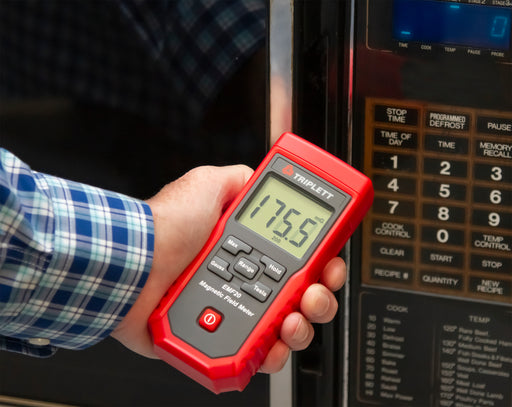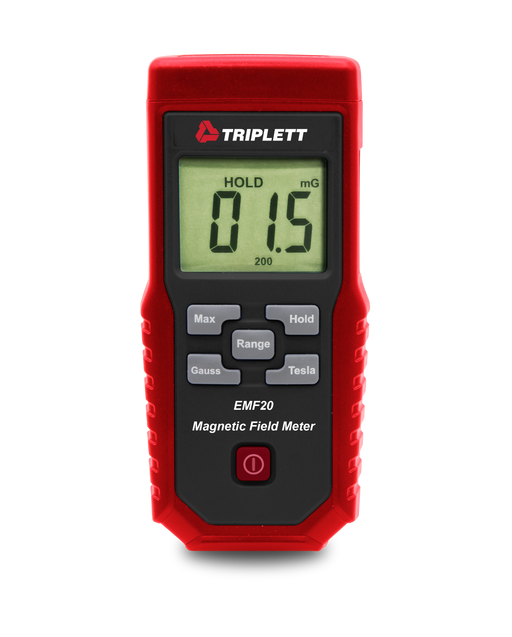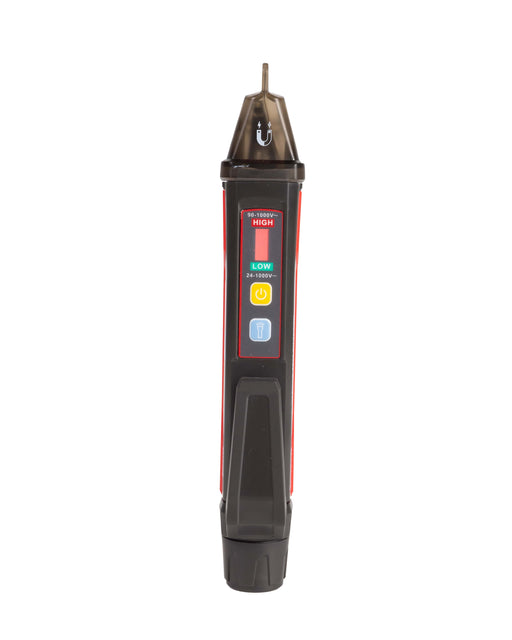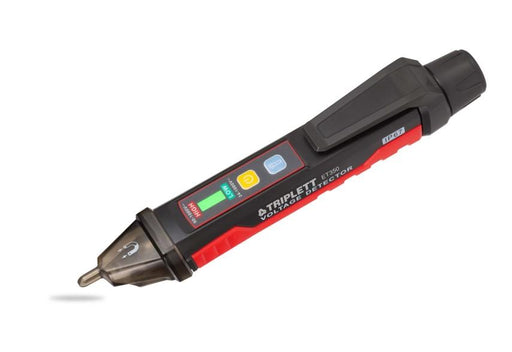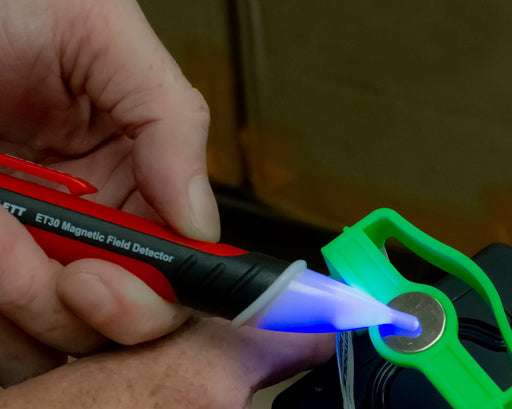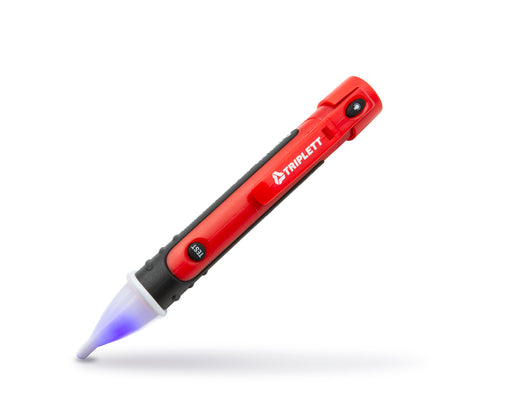Know More About Triplett Magnetic Field Tester
What is a magnetic field tester?
Electrical appliances and equipment produce electromagnetic emissions whenever they are put to use. EMF has been a key concern for people due to its ill effects. A magnetic field tester is a device that is designed to measure the amount of electromagnetic, magnetic, and electrical exposure that a device emits. The device measures low frequencies, static fields, and radiofrequency fields. The EMF exposure limit is set in different scenarios by industry regulatory bodies. Magnetic field testers or EMF detectors are used to measure these levels of EMF exposure and compare them with reference levels.
How does an EMF detector work?
EMF detectors are fitted with various sensitive components that can detect fluctuations in the magnetic and electrical energy in a particular area at any given point in time. The readings of this fluctuation enable users to detect the issues in the electrical wiring in the area and power lines. This method helps minimize EMF exposure and improve electrical infrastructure in manufacturing sites. With the increasing use of electronic devices, EMF exposure has grown tremendously, thus, the demand for EMD detectors has grown, too.
An EMF detector or magnetic field tester checks and measures the magnetic field in an area. This magnetic field reader has become an essential device because of excess radiation around us, produced by so many electronic gadgets and appliances we use on a daily basis even in homes, aside from industries and offices. This includes cellphones, wireless connectivity routers, and even kitchen appliances such as microwave ovens. This electromagnetic field detector helps identify wiring issues, safe levels of radiation, and functional issues of electronic devices by measuring the amount of radiation and if that is causing these issues. Triplett offers mainly two types of magnetic field meters- one that measures radiation between certain frequency ranges, and can measure radiation in extremely low frequency range starting from 30 Hz onwards. Some models have analyzers too. You can select the frequency range, measure radiation, and analyze it. In the second type, you have a simple pen-like probe that is a non-contact magnetic field meter. These have dual AC voltage ranges and high sensitivity for low voltage detection. These magnetic field testers are quite easy to use with a push-button menu that is easy to understand as well as a display screen. You simply need to hold this device in the area, switch it on, and select the frequency range.
What is a normal EMF level?
The EMF levels are enforced at the national, local, and global levels by different organizations. On the global scale, the level of EMF is decided by the International Commission on Non-Ionizing Radiation Protection (ICNIRP), which is an NGO recognized by the World Health Organization. In 2020, WHO published the ICNIRP guidelines on limiting the maximum EMF exposure from 100 kHz to 300 GHz. In the US, the Environmental Protection Agency (EPA) regulates the EMF exposure recommendations by following the ICNIRP guidelines. In addition to this, various governmental agencies are also responsible for regulating the EMF exposure of different electronic equipment. For instance, the Federal Communications Commission (FCC) sets the limit of exposure for cell phones and cell phone towers, smart meters; EMF exposure regulation for nuclear power stations is regulated by multiple agencies including EPA, the U.S Nuclear Regulatory Commission (NRC), and the Federal Emergency Management Agency (FEMA), and workplace EMF exposure is regulated by the Health and Safety Authority (HSA).
What are the precautions to take while using magnetic field meters?
Our EMF readers feature safety-centric designs, but you need to take the following precautions while using them.
- Read and fully understand the operating instructions before using it.
- Test the detector on a known live source before using it.
- Do not use the EMF meter if it appears to be tampered with or damaged.
- Do not use it to detect voltages higher than recommended.
- Always practice caution while measuring 30V AC and higher voltages.
- Replace the batteries if they show low battery indication.
- Use a soft dry cloth for cleaning the device.
- This instrument is designed for use in a pollution degree 2 environment.
Applications of an EMF Meter?
An EMF (Electromagnetic Field) meter, also known as EMF detector, is a device used to measure the strength and presence of electromagnetic fields in various environments. EMF meters have a wide range of applications across different industries and scenarios due to their ability to detect electromagnetic radiation. Here are some common applications of EMF meters:
- Electromagnetic Safety Assessment: EMF meters are often used to assess potential health hazards associated with electromagnetic radiation. They are used in homes, offices, and public spaces to measure the levels of electromagnetic fields emitted by electronic devices, power lines, and other sources. This helps ensure compliance with safety guidelines and regulations.
- Electromagnetic Compatibility (EMC) Testing: In electronics and telecommunications industries, EMF meters are used to test the electromagnetic compatibility of devices. This ensures that electronic equipment does not interfere with each other's operations or cause electromagnetic interference.
- Power Line and Electrical Equipment Inspection: EMF meters are employed by electricians and maintenance technicians to detect stray electromagnetic fields around power lines, transformers, circuit breakers, and other electrical equipment. This helps identify faulty or improperly shielded equipment that could pose safety risks.
- Environmental Monitoring: EMF meters are used in environmental studies to measure electromagnetic radiation from sources such as power lines, cell towers, and radio frequency (RF) transmitters. This data is crucial for assessing potential impacts on wildlife and ecosystems.
- Health and Safety Investigations: EMF meters are used in occupational health and safety assessments to measure electromagnetic fields in workplaces. This is particularly important in industries where workers are exposed to high levels of electromagnetic radiation, such as welding or certain manufacturing processes.
- RF Radiation Detection: EMF meters can measure radio frequency (RF) radiation emitted by devices like Wi-Fi routers, cell phones, and microwaves. This helps individuals assess their exposure to RF radiation and take appropriate measures to minimize it.
- Research and Scientific Studies: EMF meters are used in scientific research to measure electromagnetic fields in controlled environments. These measurements contribute to understanding the effects of electromagnetic radiation on human health, electronics, and the environment.
- Home Inspections: During home inspections, EMF meters can help identify areas with high electromagnetic field levels due to wiring issues, improperly shielded appliances, or other sources.
- Technical Troubleshooting: Engineers and technicians use EMF meters to troubleshoot electromagnetic interference issues in electronic circuits, helping them identify the sources of interference and mitigate them.
- Electric and Magnetic Field Mapping: In certain applications, EMF meters can be used to map the distribution of electric and magnetic fields around specific sources. This is useful in assessing potential hazards or designing safe layouts for equipment.
What is extremely low frequency magnetic field?
Extremely low frequency ranges from 3 to 30 Hz, and is created by lightning or other changes in the earth’s magnetic field. Designated as ELF by the International Telecommunication Union, these are radio waves used in very specific types of applications such as certain communication systems, especially under water. These radio waves can penetrate sea water and hence used in submarines or other diving equipment for communication. Triplett offers magnetic field detectors that can detect an extremely low frequency magnetic field around 30Hz.
These magnetic fields have frequencies ranging from 100kHz onwards. They go as high as 300gHz and beyond. A high amount of magnetic coupling takes place in these frequency ranges. High-frequency magnetic fields produce small waves and can be radiated by antennas. Hence, they find application in modern communication technologies such as Wi-Fi internet, smartphones, televisions, and so on. High-frequency magnetic field is also used in short range communication devices and technologies such as Bluetooth and NFC. Triplett offers magnetic field detectors that can determine high range frequencies.
How to measure electromagnetic field
Measuring electromagnetic fields (EMF) is an important aspect across a wide range sector, including electronics, environmental monitoring and telecommunications. In order to accurately measure EMF, magnetic field detectors that are specifically designed to detect the strength and direction of magnetic fields, are commonly used. So, how to measure electromagnetic field using magnetic field detectors. Follow the steps below:
- Choose the right type of model for the specific application by considering factors such as measurement range, accuracy, and environmental conditions.
- Calibrate the unit properly before use to ensure accurate and reliable measurements. It is important to calibrate the unit periodically to maintain accuracy.
- Now, place the detector in close proximity to the source of the field. The detector should be oriented in the appropriate direction to measure the desired component of the field.
- Turn on the detector and follow the instructions provided in the user manual. Move the detector around the measurement area systematically, taking readings at various points and distances to get a comprehensive picture of the electromagnetic field.
- Record the measurements repeatedly, either manually or using software provided with the detector.
- You can also document relevant information such as the date, time, location, and any other relevant parameters that may be necessary for analysis or comparison in the future.
- Once you are done with the measurements, analyze the collected data using appropriate tools or software. You may check for patterns, trends, or anomalies in the electromagnetic field readings.
- Based on the analysis, interpret the results and draw conclusions regarding the electromagnetic field's intensity, distribution, or other relevant parameters.
- Review and repeat if necessary.
Browse More Electrical Test & Measurement Collections
Multimeters & Clamp-On Meters:
| Analog Meters | Clamp-On Multimeters | Digital Multimeters |
| Railroad VOM Test Sets | Voltage & Current Dataloggers | Multimeter Case |
| AC Voltage Detector | Continuity Testers | Test Leads |
Electrical Accessories:
| GFCI Receptacle Testers | AC Line Splitters | Electrical Hand Tools |
| Non-Contact Voltage Detection Pens | Circuit Breaker Tracers |
Megohm & Resistance Testers:
| Megohmmeters - Insulation Testers | Earth Ground Resistance Testers |
Live Wire Circuit Testers:
| Live Wire Tone & Probe Kit |
Specialty:
| Power Supplies | Motor & Phase Rotation Testers |


